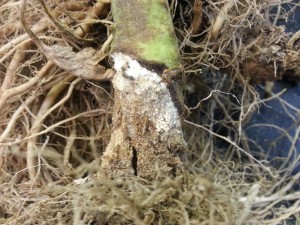Late blight was found in an organic tomato field near Bridgeton today, August 14. This is the first report of late blight in New Jersey this growing season.
Weather conditions this past week have been favorable for its development in most of the mid-Atlantic region. All tomato and potato growers in the state should scout their fields on a regular basis. All tomato and potato growers who have not initiated a protectant fungicide program should do so. For more information on controlling late blight please see the 2014 Commercial Vegetable Production Recommendations: Tomato Section, page F205 and Potato Section, page F128.
If you suspect late blight on your farm please contact your County Ag Agent.



